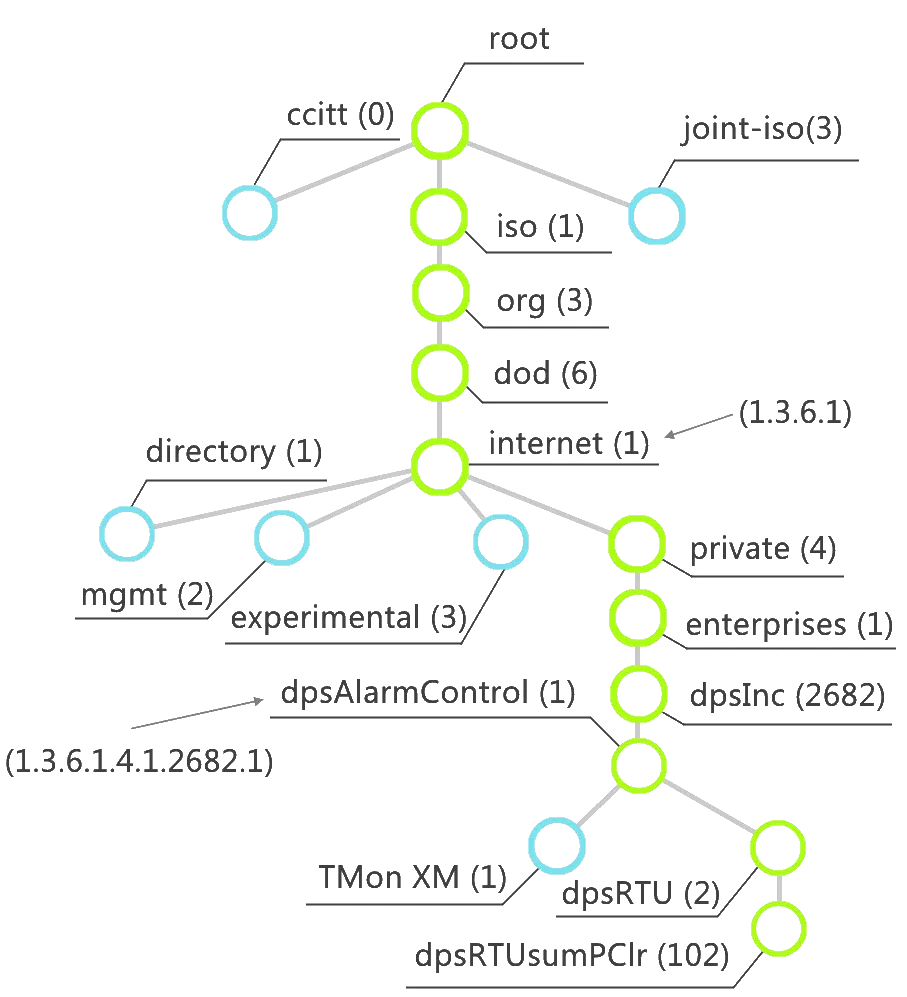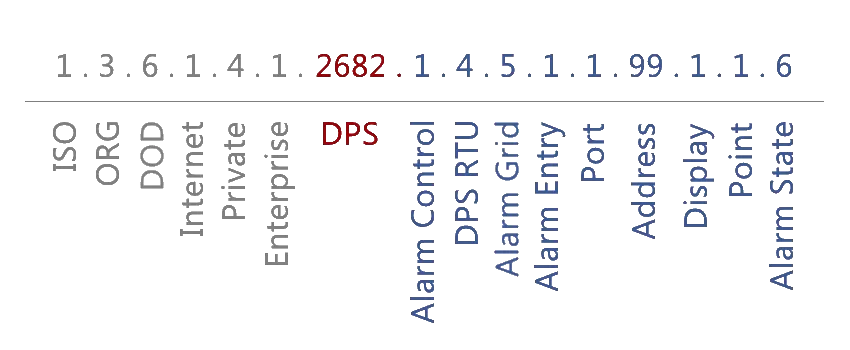Check out our White Paper Series!
A complete library of helpful advice and survival guides for every aspect of system monitoring and control.
1-800-693-0351
Have a specific question? Ask our team of expert engineers and get a specific answer!
Sign up for the next DPS Factory Training!

Whether you're new to our equipment or you've used it for years, DPS factory training is the best way to get more from your monitoring.
Reserve Your Seat TodayYou can think of an OID as an address used in SNMP messages to identify devices and their statuses - acting both as the "What is it?" as well as the "Where did it come from?" For any device using SNMP, its OID is the unique key to unlocking its specific status or data point. Want to know the temperature reading coming from a sensor at your mountaintop remote facility? There's an OID for that.
Jump to basics of SNMPSNMP Object Identifiers (OIDs) point to network objects stored in a database called the Management Information Base, often referred to as the "MIB". A MIB holds the structure of the network alarms being monitored (like a map of the "city"), and it uses the OIDs to keep track of the individual components (like the address to a house or other location). In essence, OIDs enable you to pinpoint any alarm or device state within your network, streamlining SNMP management. In this example, an SNMP OID is like the address the fire truck would drive to if the fire alarm sounded. What if a fire broke out at your house, and you called the fire department with GPS coordinates (representing the Object ID or OID)? The fire department would have to look that up in its MIB to determine the correct street address.
Learn more about MIBs
Telecom networks heavily rely on OIDs to manage vast systems and maintain optimal uptime. In telecom, SNMP OIDs describe specific locations in the network. The OID allows the MIB to translate the location of the event into a status description for your network technicians.

While it may look daunting, the OID follows a simple structure, with each "dot" segment identifying part of a network element. Going back to the home address example, the beginning of the Object Identifier tells us the hemisphere of the world, the country, state, city, zipcode, street address and eventually leads us to our driveway. In the above OID, the specific "driveway" is 102. By interpreting OIDs correctly, technicians can resolve complex network issues faster. With this structure, very specific elements can be identified and located even in very complex networks. An SNMP Manager (ex. T/Mon) translates these SNMP OIDs into a value that is then assigned readable labels in the Management Information Base (MIB). This allows the SNMP manager to produce messages that can be read by people.
When the SNMP Manager, a T/Mon in this case, requests the value ("state") of any object it is monitoring, it sends a message with that object's OID to its Management Information Base. The MIB will decode the address and attach a text description to it. This allows the SNMP Manager to present the value of the alarm condition with the identifying description of the labeled alarm. Doing so simplifies understanding and managing the vast array of OIDs present in any network.
So for example, let's say the SNMP Manager wants to know if there is a car in the driveway of your house (a "yes or no" question, often referred to as a discrete alarm in the alarm monitoring world). The SNMP Manager would look up the corresponding reference in the MIB in order to "poll" (ask) if there is a car in the driveway at 123 Main St. The MIB references 123 Main St. and translates it into the OID of your driveway. In our example OID, it would be 123 Main St = 1.3.6.1.4.1.2681.1.4.5.1.1.99.1.1.6. With the OID acting as a translator, data from any device can be effectively turned into actionable insights. The driveway (or alarm point we want to monitor) would be represented by the "102" portion of the address. The "value" reported is the current state of the driveway 102 : occupied by a car or not.
The sensor at the driveway reports back: Nope. Nobody's in the driveway. Thanks to OIDs, this clear, precise response ensures network operations remain efficient.